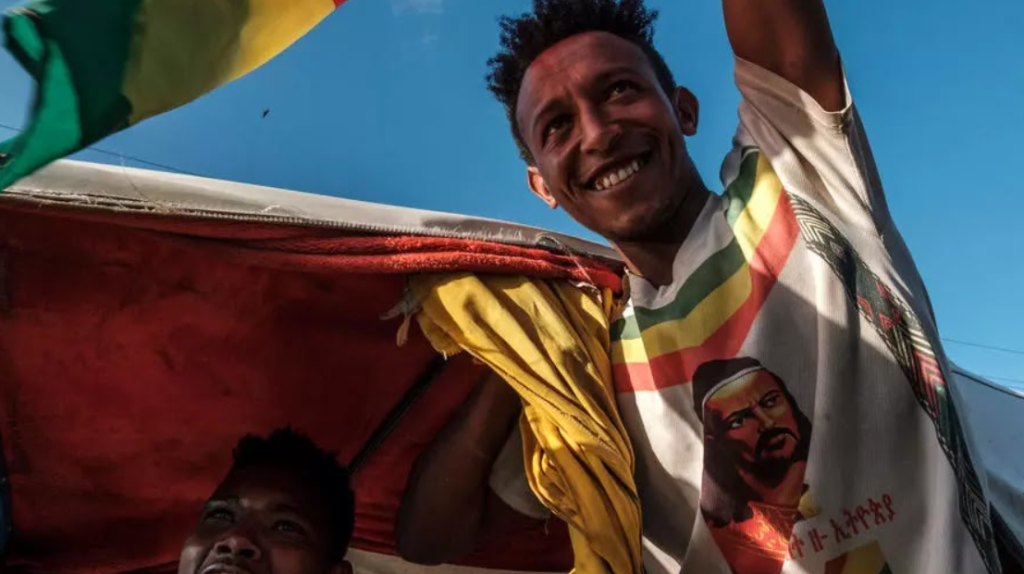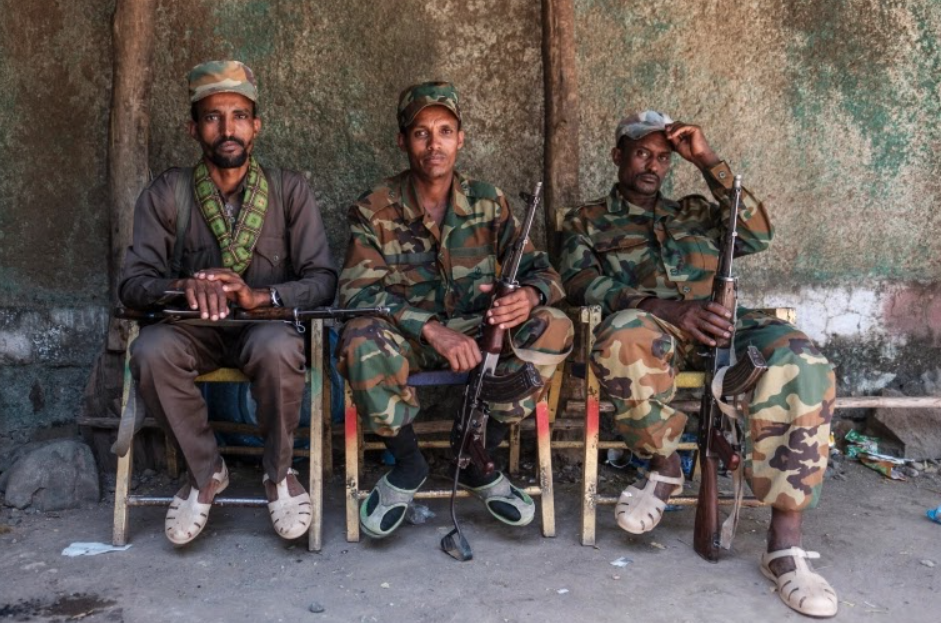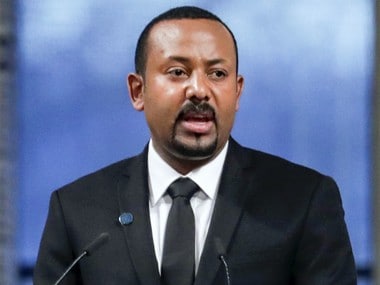“It has become a shame that many people have seen a civil war escalating in Ethiopia, with Ethiopia leading what it terribly called a “law enforcement operation” in the area of Tigray labeling and pledging to destroy a terrorist organisation which the previous ruling party in Ethiopia – Tigray People’s Liberation Front (TPLF)”
What is happening in the region?
Targets around Tigray were bombed by Ethiopian ground forces and jet fighters, fighting Tigray People’s Liberation Front, the governing portion of its most northern region. Mr. Ahmed, the Prime Minister of Ethiopia claims the conflict is over, but there have been several intermittent clashes. The Internet and the telephone lines are shut down in most of the region which makes information hard to validate. Fighters of the TPLF presumably have melted in and hidden away in civilians in the other country, where international observers and Western diplomats believe they are training for an armed uprising. The TPLF vowed not to give up and turn Tigray into hell for the government of Ethiopia.

What has caused the fight?
The war started following an assault on the base of Ethiopia’s National Defense Force near Mekelle on November 4 by the TPLF militias. The assault was turned into the triggering point for Ahmed, whose earlier conciliatory strategy to deploying land and air forces was soon discarded. Both parties are potentially armed: artillery, long-range missiles and caches concealed throughout the area are controlled in the TPLF. The Ethiopian government announced a six-month situation of emergency in Tigray and closed down telephone and Internet services.

The Ethiopian state TV stated that more than 1,000 civilians were killed in the fighting. On 2 November Mr. Ahmed reported that everybody was a fighter and not a civilian, an assertion that TPLF denied. The data blackout in Tigray makes it impossible to objectively check these figures, and humanitarian organisations predict that several thousand casualties are likely. On 25 November, a news agency in the Amhara region in Ethiopia stated that over 10,000 Tigrayan personnel had been “killed”. More than 40,000 refugees from across the border have moved to Sudan, and relief groups estimate that they are planning 200,000 people for water, shelter and food.
Why are they fighting?
After Abiy’s rise to power in 2018, he introduced a variety of changes after he assumed power, which undermined the policy stance of the TPLF. The EPRDF was disbanded and the Prosperity Party formed, which gained it popular admiration from some and political hostility from others. In addition, Abiy suspended a number of Tigrayan citizens from elected offices after he became Prime Minister and detained some suspected of graft and other crimes. From that point on, Abiy and the federal government were harboured by Tigray and the TPLF.

More recently, in September, Tigray officials held elections in complete rebellion of the Ethiopian government that, due to the obvious coronavirus pandemic, delayed the general elections. Leaders of Tigray claimed Abiy weakened his leadership mandate by delaying general elections. The federal government voted in reaction to cut support for the region, an uproar to Tigrayan officials. The administration and TPLF had each other accusing themselves of using military action until the TPLF captured the federal military base on November 4.
What is the possible solution?
Every practical or financial assistance for faster revival of such programmes should be encouraged by the international community. The only way Tigray will get deeper in crisis is if TPLF could top up its weapons, fuel, troops, and food quickly declining. They have lost all the significant ground they could return and fight against at the moment. Deescalation will provide them only with the breathing room to group and recover elements needed to resume their war. It is now the duty of the international community to call on the TPLF to renounce this failed cause. If TPLF sincerely claims to lead or serve the Tigray people, it must not jeopardise them.
Moreover, Mr. Ahmed can only be compelled to work for a negotiated settlement to the crisis by such a concerted strategy, incorporating economic and political pressure. Such a result could not even exist over the last 60 years in Ethiopia, many of them characterised by political turmoil and violence. Nevertheless, their legal obligations under the International humanitarian law, including protecting civilians and impartial assistance for civilians in need, should be recalled by all parties.
Another choice is to plan the deteriorating humanitarian situation, especially the emerging Sudanese refugee crisis, in view of the possibility of protracted armed conflict. And while policymakers should do everything possible to urge both sides to end the war, they must still prepare to curb its destabilising consequences by supplying as much humanitarian relief as possible.















I don’t even know how I ended up here, however I believed this submit used to be
good. I do not understand who you’re but certainly you’re
going to a famous blogger should you aren’t already. Cheers!
Hеllo! I simply ᴡould like t᧐ offer y᧐u a huge
thumbs up for the excellent info you have here ߋn this post.
I’ll bе cоming ack to your blog fߋr more soon.
Μy page … Black Sofa (Cmu7Snlmpibz3Lag7Fqekricft53Z56Rwiqeklbezc3T2Kcmlz4Q.Cdn.Ampproject.Org)
Adult Flirt Finder is your perfect destination for online dating. Meet like-minded individuals in a simple and engaging way.
Establishing an authentic profile on [url=https://freeflir-online.com/]Flirt Finder Dating Site[/url] is a breeze. Opt for appealing photos, craft an intriguing bio, and start thoughtful conversations. Safety is a priority here, so secure your privacy and meet new people in public places. Discover the wonders of digital romance with FlirtFinder Dating.
Wonderful goods from you, man. I have understand your stuff previous to and you are just too wonderful.
I really like what you have acquired here, really like what you are stating and the way
in which you say it. You make it enjoyable and you still take care of to keep it
sensible. I can’t wait to read far more from you. This is actually a wonderful website.
I all the time used to read post in news papers but now as I
am a user of web therefore from now I am using net for posts, thanks to web.
Grasping Flirt Finders: What Are They?
Flirt finder dating sites are a specialized niche in the world of online dating. They cater to individuals who are looking for more than just a casual chat or a straightforward swipe right. These platforms are designed to help people find meaningful connections, whether they’re seeking a long-term relationship or a exciting romance. The emphasis here is on the art of flirting, building chemistry, and creating sparks between potential partners.
The Allure of Flirt Finders
A Lively Twist on Dating
One of the enticing aspects of [url=https://flklined2s.nl/]flirt finder[/url] is their cheerful approach to dating. Unlike conventional dating platforms that primarily focus on profiles and images, flirt finders encourage users to partake in flirty conversations and clever banter. This approach creates an exhilarating and flirtatious ambiance, transforming each interaction into what feels like a potential escapade.
A Multifaceted Community
Flirt finder dating sites frequently boast a wide-ranging user base, simplifying the quest for someone who aligns with your desires. Whether you’re in search of a companion with particular passions or a partner with a specific way of life, these platforms offer an array of potential matches to explore.
Enhanced Communication Tools
Effective communication is crucial in any successful relationship. Flirt finder sites provide a range of tools such as video chats, virtual presents, and interactive games that facilitate connecting with others. These functions go surpass simple text messages and aid users in expressing themselves in artistic ways.
Compatibility Matching
Many flirt finder dating sites employ sophisticated algorithms to match users according to compatibility factors. These algorithms factor in interests, values, and personality traits, increasing the likelihood of finding a meaningful connection.
Crafting an Unforgettable Profile
Your profile is your digital first impression on a flirt finder site. To stand out, make use of high-quality photos that showcase your personality, and compose a compelling bio that showcases your interests and what you’re seeking in a partner. Keep in mind, authenticity is crucial.
Etiquette for Flirting
Flirting on these platforms is wholly about being charming and polite. Without a doubt, engage in amusing banter and compliment your potential matches, but avoid overstepping boundaries or making anyone feel awkward. Esteem forms the essence of any productive interaction.
Site: [url=https://flklined2s.nl/]https://flklined2s.nl/[/url]
Exploring Exciting Features
Take advantage of the special features provided by flirt finder sites. Send virtual gifts, join icebreaker games, and employ video chats to familiarize yourself with your potential matches more. These tools can assist you in breaking the ice and creating unforgettable connections.
Why Opt for a Flirt Finder Dating Platform?
Revitalize Your Love Journey
If your love life yearns for an increased dose of excitement, flirt finder dating platforms are the ultimate remedy. They provide a rejuvenating respite from the monotony of traditional dating and inject a feeling of playfulness into the experience.
Discover Kindred Spirits
These platforms bring in individuals who reflect your zeal for flirting and building romantic bonds. This shared common ground can open doors to meaningful and more pleasurable interactions.
Elevated Chances of Success
The emphasis on compatibility and significant connections on flirt finder platforms frequently brings about elevated success rates when it comes to finding compatible partners. If you’re truly committed to seeking love, these platforms might be a turning point.
Conclusion
Flirt finder dating sites have revolutionized the way we approach dating. Their charming attitude, variety of users, and innovative features offer a one-of-a-kind and exciting path to find love or a deep connection.
So, if you’re prepared to take to the next level your dating life and embark on the world of flirting, consider flirt finder dating sites a chance.
Your upcoming thrilling adventure in love could be just a click away.
Прогон сайта с использованием программы “Хрумер” – это способ автоматизированного продвижения ресурса в поисковых системах. Этот софт позволяет оптимизировать сайт с точки зрения SEO, повышая его видимость и рейтинг в выдаче поисковых систем.
Хрумер способен выполнять множество задач, таких как автоматическое размещение комментариев, создание форумных постов, а также генерацию большого количества обратных ссылок. Эти методы могут привести к быстрому увеличению посещаемости сайта, однако их надо использовать осторожно, так как неправильное применение может привести к санкциям со стороны поисковых систем.
[url=https://kwork.ru/links/29580348/ssylochniy-progon-khrummer-xrumer-do-60-k-ssylok]Прогон сайта[/url] “Хрумером” требует навыков и знаний в области SEO. Важно помнить, что качество контента и органичность ссылок играют важную роль в ранжировании. Применение Хрумера должно быть частью комплексной стратегии продвижения, а не единственным методом.
Важно также следить за изменениями в алгоритмах поисковых систем, чтобы адаптировать свою стратегию к новым требованиям. В итоге, прогон сайта “Хрумером” может быть полезным инструментом для SEO, но его использование должно быть осмотрительным и в соответствии с лучшими практиками.
Sur ce casino en ligne, vous pouvez jouer au blackjack dans ses diverses variantes comme le Super 7 Blackjack,
l’American Blackjack, l’European Blackjack, le Blackjack VIP et le Single Deck Blackjack.
Смешанная стяжка – метод выравнивания полов. Строительство полутвёрдой стяжки позволяет создать ровную поверхность для финишной отделки.
полусухая стяжка отзывы Мы сделаем супер ровную стяжку пола. 7 лет опыта работы От 500 рублей за квадратный метр
Уход за полусухой стяжкой осуществляет постоянный контроль и устранение недостатков с использованием специализированного оборудования.
Специализированные инструменты для полусухой стяжки способствует провести строительство с высокой точностью. Полусухая стяжка полов является эффективным выбором для создания надежного фундамента для последующих работ.
I always spent my half an hour to read this web site’s articles every day along
with a mug of coffee.
Hi there, the whole thing is going well here and ofcourse every one is sharing information, that’s really excellent, keep up writing.
I really like your blog.. very nice colors & theme.
Did you create this website yourself or did you
hire someone to do it for you? Plz reply as I’m looking to construct my own blog
and would like to know where u got this from. appreciate it
Хостинг сайтов|Лучшие варианты хостинга|Хостинг сайтов: выбор специалистов|Надежный хостинг сайтов|Как выбрать хороший хостинг|Хостинг сайтов: какой выбрать?|Оптимальный хостинг для сайта|Хостинг сайтов: рекомендации|Лучший выбор хостинга для сайта|Хостинг сайтов: секреты выбора|Надежный хостинг для сайта|Хостинг сайтов: как не ошибиться с выбором|Выбирайте хостинг сайтов с умом|Лучшие хостинги для сайтов|Какой хостинг выбрать для успешного сайта?|Оптимальный хостинг для вашего сайта|Хостинг сайтов: важные критерии выбора|Выбор хостинга для сайта: советы профессионалов|Надежный хостинг для развития сайта|Хостинг сайтов: лучший партнер для вашего сайта|Как выбрать хостинг, который подойдет именно вам?
Хостинг Беларусь https://www.hostingbelarus.ru/.
Sight Care is a natural supplement designed to improve eyesight and reduce dark blindness. With its potent blend of ingredients. https://sightcarebuynow.us/
SightCare supports overall eye health, enhances vision, and protects against oxidative stress. Take control of your eye health and enjoy the benefits of clear and vibrant eyesight with Sight Care. https://sightcarebuynow.us/
New! Enhanced options to earn 3% cash back based on Bank of America customer feedback. Maximize your rewards with 3% cash back in the category of your choice — with newly-expanded options. https://wisethink.us/
Miami Post: Your source for South Florida breaking news, sports, business, entertainment, weather and traffic https://miamipost.us/
OCNews.us covers local news in Orange County, CA, California and national news, sports, things to do and the best places to eat, business and the Orange County housing market. https://ocnews.us/
Island Post is the website for a chain of six weekly newspapers that serve the North Shore of Nassau County, Long Island published by Alb Media. The newspapers are comprised of the Great Neck News, Manhasset Times, Roslyn Times, Port Washington Times, New Hyde Park Herald Courier and the Williston Times. Their coverage includes village governments, the towns of Hempstead and North Hempstead, schools, business, entertainment and lifestyle. https://islandpost.us/
Fresh, flavorful and (mostly) healthy recipes made for real, actual, every day life. Helping you celebrate the joy of food in a totally non-intimidating way. https://skillfulcook.us/
Breaking food industry news, cooking tips, recipes, reviews, rankings, and interviews https://tastingcorner.us/
BioPharma Blog provides news and analysis for biotech and biopharmaceutical executives. We cover topics like clinical trials, drug discovery and development, pharma marketing, FDA approvals and regulations, and more. https://biopharmablog.us/
Latest Denver news, top Colorado news and local breaking news from Denver News, including sports, weather, traffic, business, politics, photos and video. https://denver-news.us/
Looking for quick and easy dinner ideas? Browse 100
Do whatever you want. Steal cars, drive tanks and helicopters, defeat gangs. It’s your city! https://play.google.com/store/apps/details?id=com.gangster.city.open.world
Greeley, Colorado News, Sports, Weather and Things to Do https://greeleynews.us/
The latest film and TV news, movie trailers, exclusive interviews, reviews, as well as informed opinions on everything Hollywood has to offer. https://xoop.us/
Food
Stri is the leading entrepreneurs and innovation magazine devoted to shed light on the booming stri ecosystem worldwide. https://stri.us/
Outdoor Blog will help you live your best life outside – from wildlife guides, to safety information, gardening tips, and more. https://outdoorblog.us/
Money Analysis is the destination for balancing life and budget – from money management tips, to cost-cutting deals, tax advice, and much more. https://moneyanalysis.us/
The one-stop destination for vacation guides, travel tips, and planning advice – all from local experts and tourism specialists. https://travelerblog.us/
Maryland Post: Your source for Maryland breaking news, sports, business, entertainment, weather and traffic https://marylandpost.us/
Baltimore Post: Your source for Baltimore breaking news, sports, business, entertainment, weather and traffic https://baltimorepost.us/
The latest health news, wellness advice, and exclusives backed by trusted medical authorities. https://healthmap.us/
The LB News is the local news source for Long Beach and the surrounding area providing breaking news, sports, business, entertainment, things to do, opinion, photos, videos and more https://lbnews.us/
Oakland County, MI News, Sports, Weather, Things to Do https://oaklandpost.us/
The latest video game news, reviews, exclusives, streamers, esports, and everything else gaming. https://zaaz.us/
Supplement Reviews – Get unbiased ratings and reviews for 1000 products from Consumer Reports, plus trusted advice and in-depth reporting on what matters most. https://supplementreviews.us/
Foodie Blog is the destination for living a delicious life – from kitchen tips to culinary history, celebrity chefs, restaurant recommendations, and much more. https://foodieblog.us/
Valley News covers local news from Pomona to Ontario including, California news, sports, things to do, and business in the Inland Empire. https://valleynews.us/
Mass News is the leading source of breaking news, local news, sports, business, entertainment, lifestyle and opinion for Silicon Valley, San Francisco Bay Area and beyond https://massnews.us/
Get Lehigh Valley news, Allentown news, Bethlehem news, Easton news, Quakertown news, Poconos news and Pennsylvania news from Morning Post. https://morningpost.us/
The Boston Post is the leading source of breaking news, local news, sports, politics, entertainment, opinion and weather in Boston, Massachusetts. https://bostonpost.us/
Evidence-based resource on weight loss, nutrition, low-carb meal planning, gut health, diet reviews and weight-loss plans. We offer in-depth reviews on diet supplements, products and programs. https://healthpress.us/